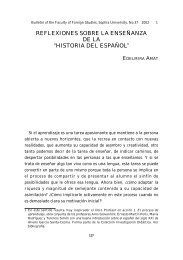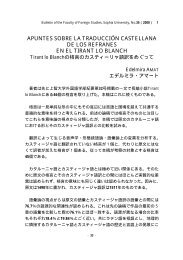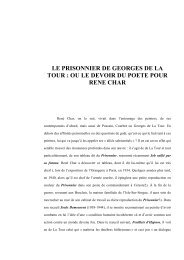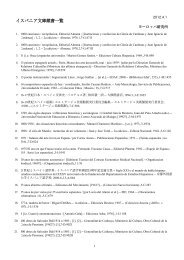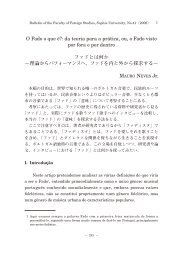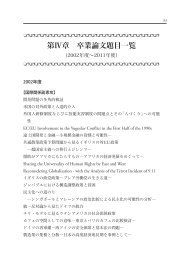Forgotten Paths to NEPA: A Historical Analysis of the Early ...
Forgotten Paths to NEPA: A Historical Analysis of the Early ...
Forgotten Paths to NEPA: A Historical Analysis of the Early ...
You also want an ePaper? Increase the reach of your titles
YUMPU automatically turns print PDFs into web optimized ePapers that Google loves.
Joseph DiMen<strong>to</strong> and Kazu<strong>to</strong> Oshio<br />
Many credit <strong>the</strong> 1969 Santa Barbara oil spill with igniting <strong>the</strong> environmental<br />
movement. Over eleven days, 200,000 gallons <strong>of</strong> crude oil spilled in<strong>to</strong> <strong>the</strong> channel<br />
from a disabled oil rig. In <strong>the</strong> aftermath, 3,600 birds were dead along with ten seals<br />
and dolphins and countless fish and marine invertebrates. Critics pointed <strong>to</strong> <strong>the</strong><br />
inadequacy <strong>of</strong> federal regulations and focused on a government unresponsive <strong>to</strong><br />
<strong>the</strong> needs <strong>of</strong> nature. A local activist environmental law organization quickly<br />
formed: Get Oil Out (GOO). The founder called for <strong>the</strong> public <strong>to</strong> reduce its<br />
driving, <strong>to</strong> destroy credit cards from oil companies, and <strong>to</strong> boycott gas stations<br />
associated with <strong>of</strong>fshore drilling companies. Some 100,000 signatures were ga<strong>the</strong>red<br />
for a petition <strong>to</strong> ban <strong>of</strong>fshore oil drilling.<br />
In response <strong>to</strong> <strong>the</strong>se warnings, during <strong>the</strong> 1960s and 1970s, numerous environmental<br />
laws were passed. They regulated pesticides, set standards for clean<br />
air and water, preserved wilderness, marine mammals, and endangered species,<br />
and established procedures for waste disposal. One <strong>of</strong> <strong>the</strong> most sweeping <strong>of</strong> <strong>the</strong><br />
new laws, <strong>NEPA</strong>, was signed in<strong>to</strong> law on New Year’s Day 1970 by President<br />
Richard Nixon.<br />
Although <strong>the</strong> preamble sets out goals designed <strong>to</strong> ensure a safe, healthful<br />
environment, <strong>NEPA</strong>’s most significant requirement is <strong>the</strong> mandating <strong>of</strong> an environmental<br />
impact statement (EIS) for every proposed major federal action that<br />
would significantly affect <strong>the</strong> quality <strong>of</strong> <strong>the</strong> human environment. Duplicated by<br />
state legislatures throughout <strong>the</strong> country, <strong>the</strong>se procedures and reports have<br />
altered or mitigated many proposed local and federal development projects. With<br />
a new recognition <strong>of</strong> a threatening population bomb, urbanization, industrial<br />
expansion, resource exploitation, and technological advances, <strong>the</strong> environmental<br />
movement was born and ultimately <strong>the</strong> field <strong>of</strong> environmental law was given<br />
birth.<br />
IV<br />
How do law pr<strong>of</strong>essors examine <strong>the</strong> his<strong>to</strong>rical emergence <strong>of</strong> environmental<br />
laws? “Law schools’ pr<strong>of</strong>essional presentism . . . impedes his<strong>to</strong>rical analysis,”<br />
argues a former U.S. Supreme Court Fellow, Karl Brooks, now associate pr<strong>of</strong>essor<br />
<strong>of</strong> his<strong>to</strong>ry at <strong>the</strong> University <strong>of</strong> Kansas. He adds, “Employed <strong>to</strong> teach (usually)<br />
<strong>the</strong> law as it is or (occasionally) might be, but rarely <strong>the</strong> law as it came <strong>to</strong> be,<br />
legal academics privileged <strong>the</strong> contemporary at <strong>the</strong> expense <strong>of</strong> <strong>the</strong> his<strong>to</strong>ric.” Brooks<br />
27






